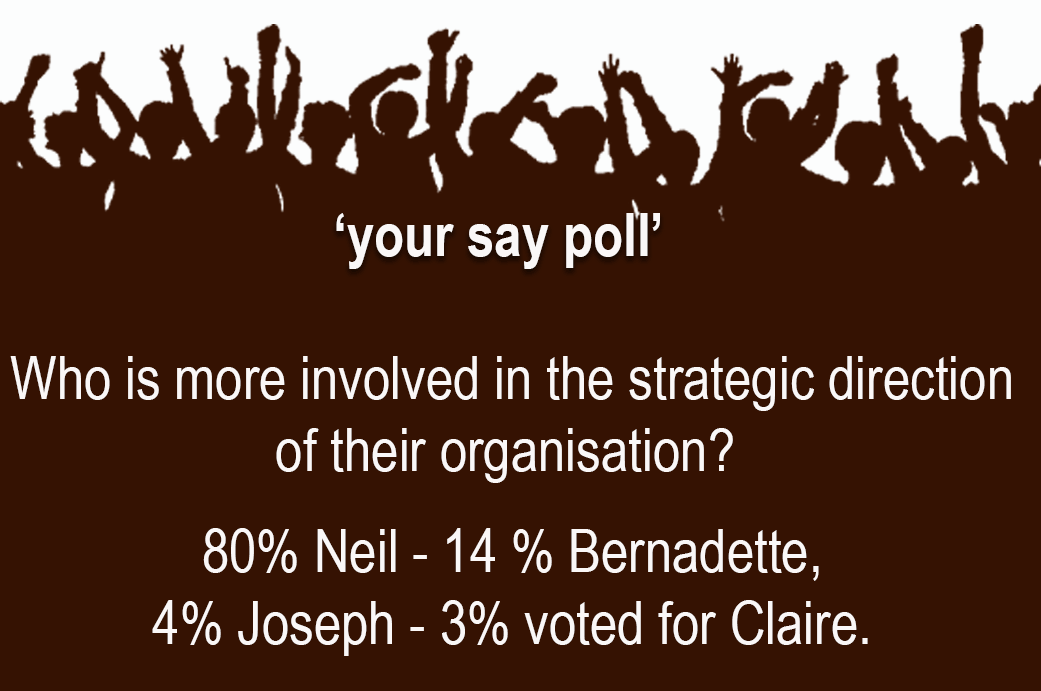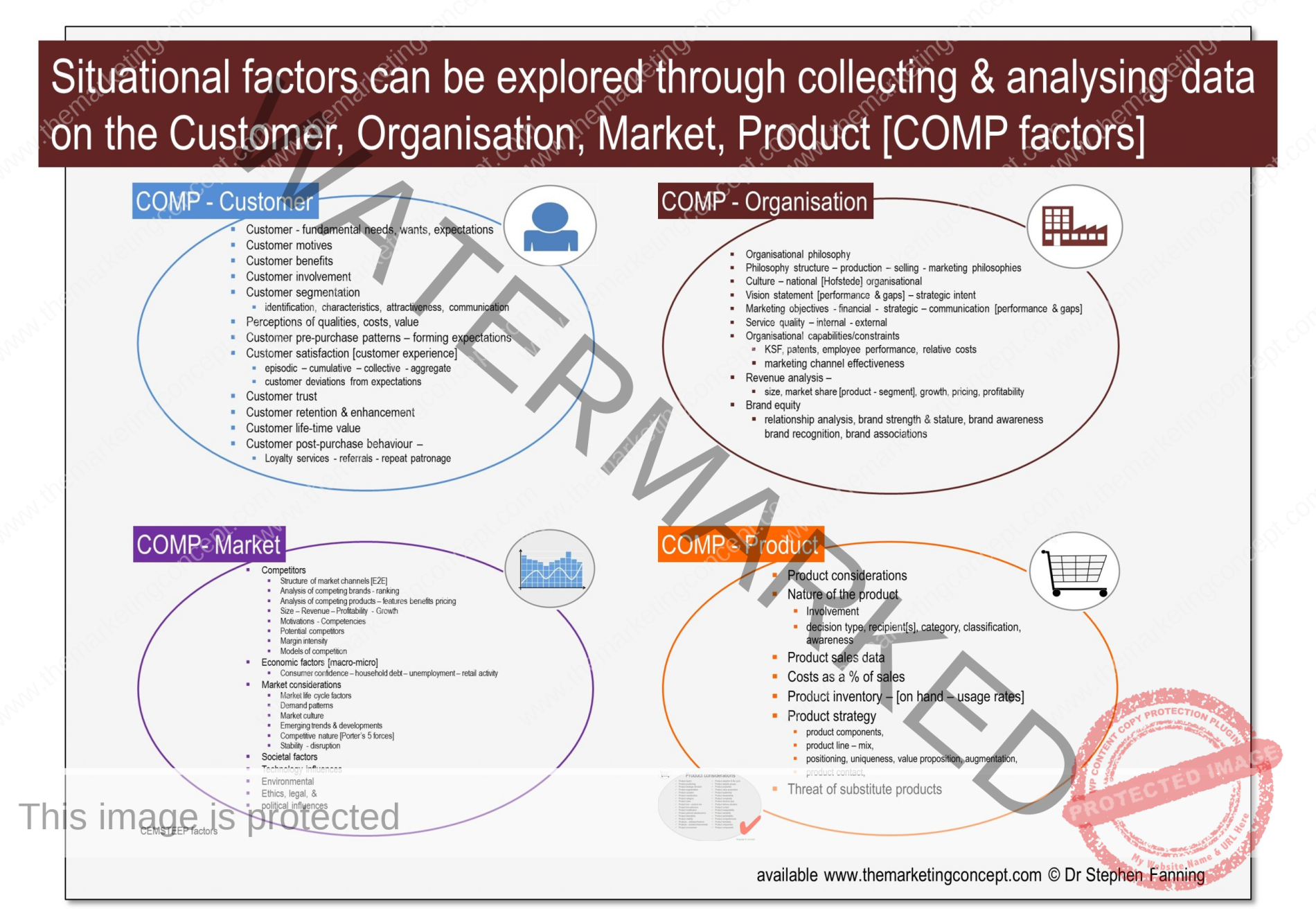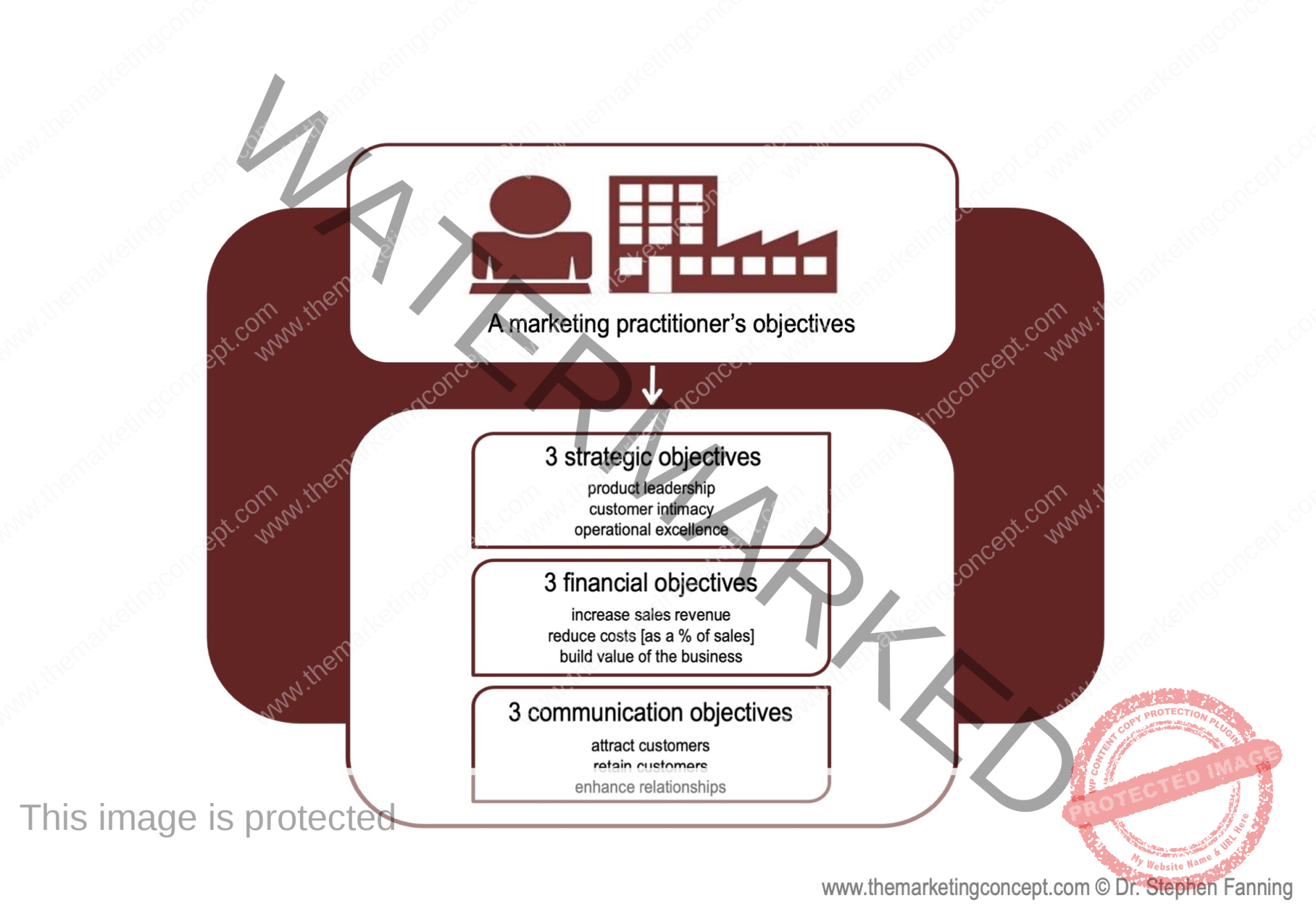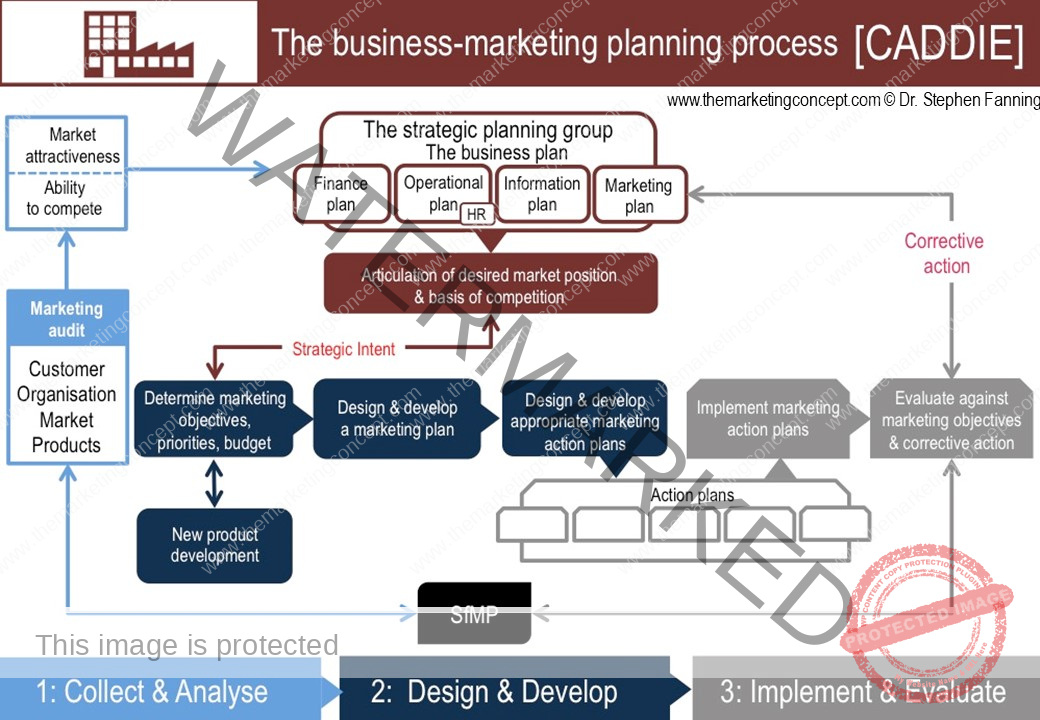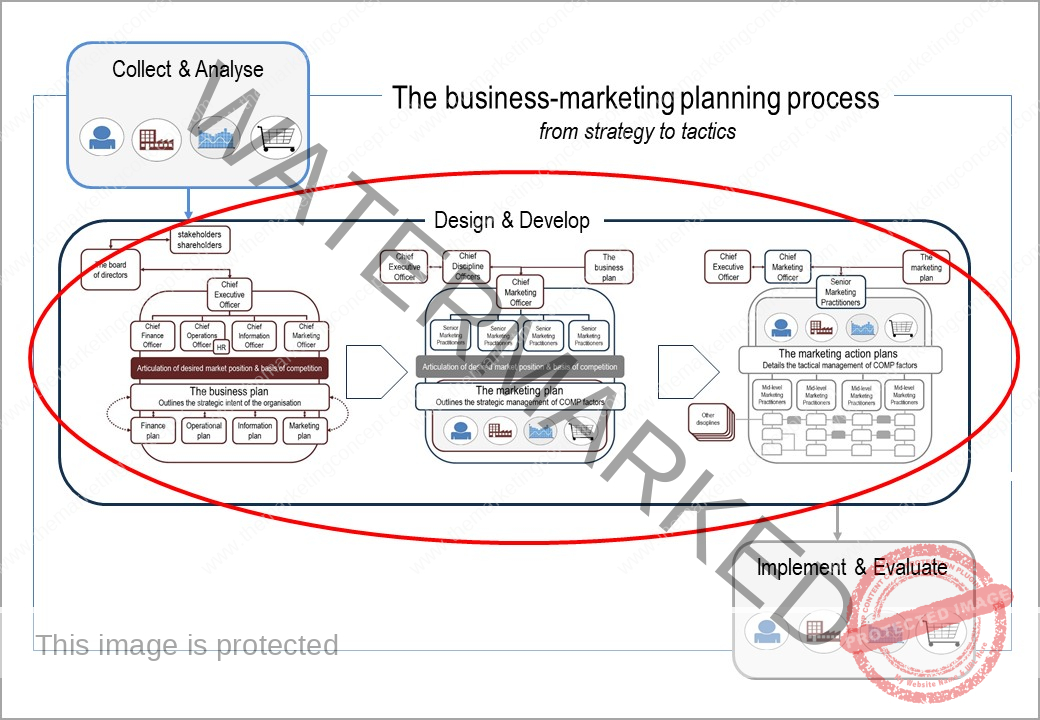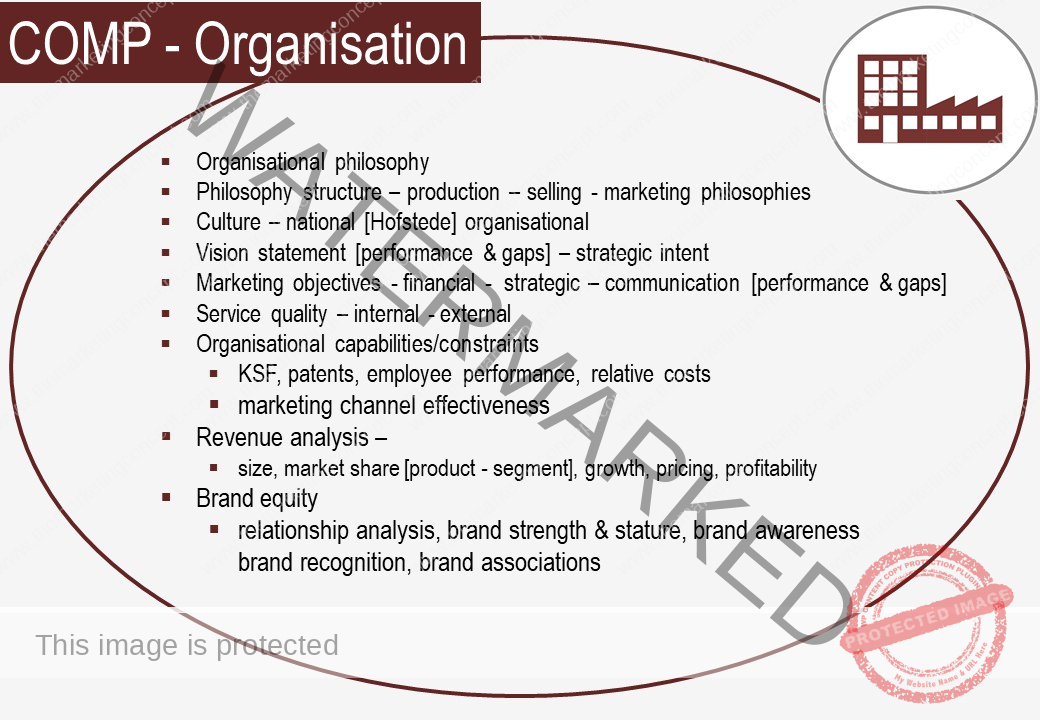
activity: four university friends catch up [part 1]
Stephen Fanning
This activity is a fictional construct – where four university friends catch up at a university alumni presentation and then meet to chat about their lives and careers since graduating from university.
The primary takeaway is that marketing is the totality of strategic and tactical actions that an organisation undertakes to best satisfy the customer and the organisation.
This activity highlights that organisations vary in size, structure, reach, management systems, social relationships, marketing philosophy and practice, and organisational culture. Additionally, organisations are a collection of people – and people vary – therefore the organisational culture will vary. Although it is clear that different organisations will vary, the activity also highlights that in larger organisations different departments may vary. In the following activity there is a hint at the complexity of relationships, particularly when the organisation has a global reach. There is also a sense of belonging and how organisations have a purpose that goes beyond just earning money.
This activity also provides an insight to organisational culture and to the business-marketing planning process – we will revisit this activity to explore this in greater detail in section 3. Please Note: This activity can be a stand alone activity, however, it is also a precursor to other activities.
Scenario: At a recent University Alumni event, 4 university friends [Bernadette, Joseph, Claire, and Neil] were reunited after losing contact for a number of years – they were once very close and all regretted that they had not kept in touch.
The Alumni event was a 30 minute presentation ‘The role of stakeholders in the modern organisation’. The concluding remark was that organisations have an obligation to create value that goes beyond just creating value for their shareholders and it includes broad obligations to the public and society – stakeholders.
After the presentation the 4 friends engaged in polite small-talk about the presentation.
Neil stated that he would re-read The marketing concept [e-book] and in particular profit4 – profit for the customer, the organisation, the people, and society – to revisit stakeholders and channel partners.
Joseph stated [and Bernadette agreed] that in addition to internal and external stakeholders there is a growing influence of online stakeholders and online marketing channel partners.
Claire thought it was an interesting presentation but also an example of ‘death by PowerPoint’.
Although, all four friends found the talk interesting, the event was not really conducive to enable them to have a good ‘catch-up’ chat – so they agreed to meet up for lunch a few weeks later.
ooo0ooo
A few weeks later
Over lunch they talked about their times at university, and their times since university. In an informal way, as friends do, they discussed the organisations they worked for and their roles within their organisations – and some random bits of information.
Bernadette works for a medium sized organisation that has four stores or outlets in the metropolitan area. The organisation specialises in the sourcing and supply of bathroom fittings and ceramic tiles. Although they are well known as a retailer [B2C] – the trade sales [B2B] are higher in turnover and profit. Bernadette, states that she has considerable autonomy in her role, she meets with the Managing Director on a daily basis and visits the outlets at least once a week. Although, the managing director is responsible for the strategic direction of the organisation, his main focus is sourcing and pricing the right mix of products from Australian and increasingly overseas manufactures. In addition, the managing director ensures that all products comply with the appropriate regulations and standards – this allows her to focus on day-to-day matters.
Each of the outlets has a store manager who has the overall responsibility for the store and each store manager reports to Bernadette. Within the stores there is a retail manager and a trade manager who have the responsibility for sales and customer relationships. As the business has grown the retail and trade managers now report to the store manager. There are around 16 retail staff who handle domestic customer enquiries and they report to the retail managers; in addition, there are 4 trade representatives who call on builders, plumbers and tiling companies, the trade representatives report to the trade managers. Bernadette stated that she has some contact with both retail and trade staff and customers – and they know her through trade shows, newsletters, and social media posts.
Whilst Bernadette majored in management and marketing much of her time is spent on HR, IT, and finance issues – she wears multiple hats. She works closely on day-to-day matters with the accountant, who is on the same level as Bernadette – when needed – they outsource expertise. The managing director, the accountant and Bernadette spend considerable time crafting the business strategy and various business plans; a great deal of time is spent collecting and analysing internal and external data. As for sales she states builders and trade sales can vary greatly, however, DIY renovations are relatively stable.
She states ‘our market is very competitive there are a few big players who often behave as category killers and they have huge buying power. Also there many businesses our size who need to be monitored. Fortunately, the products we sell are not subject to big swings in fashion and we can use price to manage old stock. Economic factors, such as home interest rates and the real estate market influence consumer spending and the DIY market. Although we are constantly monitoring situational factors we do a market audit of competition, economic conditions, market forces, social factors, technology changes, environmental factors, ethical [+ legal] issues, and political factors [CEMSTEEP] we conduct a detailed market audit before we enter the business planning process’.
When her friends state that it sounds perfect, she states that she worries that being in a small-medium sized organisation [SME] means that her future career opportunities are limited.
Joseph is the branch manager for a world leading car manufacturer. His responsibilities involve liaising with the local automobile retailers [dealers] and ensuring that they have the correct product knowledge and the right mix of stock. In addition, Joseph has a number of stakeholders that he must meet with and ensure that his organisation is acting as a good corporate citizen. Joseph is also responsible for meeting his budgeted sales, market share targets, and for forecasting the right mix of products. This requires Joseph to analyse a number of indicators, household debt, consumer confidence, industry trends, industry sales figures, and other marketing indicators – he stated that it sometimes reminds him of the marketing audit we did at uni – but real. Joseph states that his organisation describes marketing as both strategic marketing and tactical marketing – and he is firmly in the tactical marketing camp.
Joseph is ‘on the road’ for a considerable percentage of the week and works with two office staff. One is the office manager who has been with the organisation for many years and although she is considered a ‘pedant’ by the national office, Joseph couldn’t do his job without her support – she treats him like a son. Basically, he is responsible for marketing and she is responsible for financial reporting – all state branch offices in Australia have a similar structure.
Joseph’s organisation adopts a Head Office, Regional Office, Country Office, Branch office structure. He reports to the national sales manager [Australia] who in turn reports to the Managing Director [Australia]. The Australian operations, reports to the Asian Regional Office which is located in Singapore. There are five regional offices one in Europe, North America, South America, Middle East, and Asia respectively. The regional offices in turn report to the Head Office located in Germany. Joseph believes that having a German head office and origins has influenced the organisational philosophy and culture. According to Joseph his organisation believes that by taking a branch-country-region focus, the organisation can tailor its approach to each market, however, he points out that some within his organisation argue that there are too many people wanting to make product decisions and this can result in too many product variations.
Nevertheless, Joseph stated that compared to Bernadette, he makes very few, if any, strategic decisions, and has many layers of management to report to. However, he does get well paid, had good bonuses, travels to various conferences, and full use of a company car. He was hoping to transfer to the Sydney, Singapore, or London office to further his career.
Strangely, although Joseph felt like a small cog in a very big machine, he also said that he also felt as if he was part of ‘tribe’. Once, when he and his girlfriend were in London, he called up the London sales manager, Joseph had only met him once before so he felt a bit awkward, however, that night some of the people from the London office took them both out for dinner and drinks and the sales manager insisted on paying. ‘I didn’t expect that’ he said.
Joseph stated that when he sees one of ‘his cars’ on the road he feels as if he is involved in something quite big and global.
Claire also works for a large multi-national organisation, however, she works for FMCG organisation; they have a similar structure to the company Joseph works for, however, their structure is more geared around their brands and products and geography. This means that procurement, sales, new product launches, advertising, sales promotions, trade shows, product training, and forecasting are done by the state marketing team who report to a Chief Marketing Officer [Australia] and onto a Chief Marketing Officer [Global].
Other business functions logistics, finance, accounting, and legal matters are handled by operational staff that span all products/brands of the organisation. The various product/brand marketing teams and the operational staff are housed in the same complex. Claire believes, that from a sales perspective, the structure makes sense as there are a number of unrelated brands with unrelated customers. Claire feels that having a geographical territory gives her an intimate knowledge of her customers and competitors and because her product manager has similar objectives they are a focused and competitive team. This means that she has a product portfolio and sales targets for each product and each customer. On a regular basis she ‘calls on’ the state office of the various supermarkets and chemist chains, but, mostly, she ‘calls on’ the individual supermarkets and stores.
She states that, unlike Bernadette and Joseph, the competitive nature of her company means that her office is internally very competitive and this makes for a lot of politics and ‘FIGJAM’. Also, as her customers are national retailers, all strategic decisions are made at a national level – so sometimes she feels her role is purely tactical. The state office is required to collect considerable market intelligence and this needs to be collected and analysed and then passed on to the CMO [Australia] and then the CMO [Global] for global and strategic decision making.
Claire feels, that like Joseph, her brands are big brands and this gives her a certain status and respect; she feels that working for such a prestigious organisation means that all the hard work at university was not wasted. On a personal side Claire is in a relationship ‘I went to the Grand Final of the football and I ended up sitting next to this guy and we chatted, he texted me a few times, and then we went out and that was 18 months ago’. He is into sustainability, conservation, climate change, save the planet – so I haven’t invited him to any work parties.
On leaving university Neil felt that he had enough of older people telling him what to do and when to do it. After graduating Neil was fortunate that a friend of his father needed someone to set up a web-site. And whilst ‘I didn’t know absolutely everything about web-site design I knew more than my father’s friend, plus, I learned quickly and next thing I knew I was getting recommendations and new clients’.
Neil states that he has never told anyone this before, but, one of his clients runs a ladies’ only gym and he handles the web-site but also the social media, at first Neil found ‘thinking like a woman’ a little strange, but, in time the needs of the target market and their lifestyle becomes second nature. Bernadette laughs and says ‘no way could you ever think like a woman’ and the group laughs. Neil says that he doesn’t actually write the blogs – that would not be authentic – one of the ladies on the team does that, however, as a marketing practitioner you need to be able to research and understand the dreams, desires, and demands of your target market regardless of their gender or differences – that is the best part – it broadens your perspective.
Neil adds that ten years ago being a web-designer and having a boutique marketing agency was novel, but, today this combination is more the norm. I think when we graduated we were at the start of a radical change, it wasn’t so much the smartphone – it was the apps, the mobility and networking that the smartphone enabled. ‘Each day I spend a great deal of time using social media analytic tools to collect and analyse the voice of the customer and then collate and pass on my findings to my clients’. Neil has a small team of two full time staff members and a few regular sub-contract graphics staff and when he needs expertise – he outsources.
At first he worked from his parents’ home but then he found some office space just outside the CBD, it is a loft in a re-purposed building and gives a good feel ‘exposed bricks, wooden rafters, glass partitions – there is a good coffee shop nearby and most days I take my dog to work’. Everyone is a little envious but Neil state that he first thought he would have time to surf and hangout with his mates but has found that holidays are rare; except around Christmas when everything shuts down. Stating – he is either trying to meet deadlines or trying to get new business. The other thing is all my mates are also busy so that was really just a youthful fantasy. ‘The best thing is that I get a great deal of satisfaction; especially when my clients are satisfied. If there is a downside it is all the compliance issues – payroll, superannuation for staff, tax, insurances – and just managing the cash flow.
After a pause in the conversation – Neil asks – Did you know I met my girlfriend through work? She works for one of my clients.
With a cheeky smile Joseph asks, does the girlfriend have a name, what is her job, and does she have a sister?
Neil explains that his girlfriend, Sarah, works for an online real estate company. Sarah is a ‘business/systems analyst’ her job is to monitor the digital platform and determine how to make the salespipeline more efficient and effective. Her role involves constant monitoring of the metrics, she calls them ‘analytics because she makes decisions’. When you think about her job it is really – a new industry. The company is a good company and she seems happy and they pay well and there is a commission for the number of leads and the number of completions – so they are results focussed. Neil adds that ‘she ‘doesn’t have a sister and even if she did, I wouldn’t introduce her to some who sells cars for a living’ and already has a girlfriend’. To which Joseph fakes offense.
Claire adds ‘maybe you are in touch with your feminine side after all’.
Clarification – stakeholders and marketing channel partners
In business, it is common to refer to ‘stakeholders’ – a person or organisation that has an interest [or a stake] in an organisation and may influence or be influenced by the organisation or be effected by an “organisations’ decisions, policies, and operations” (Lawrence & Weber, 2017, p.7). Stakeholders are either internal to the organisation [internal stakeholders] or external to the organisation [external stakeholders]. There are a number of internal and external stakeholders mentioned in this activity.
It is also important to highlight that there is a difference between external stakeholders and marketing channel partners. Marketing channel partners are always stakeholders, however, not all stakeholders are marketing channel partners.
The word channel comes from the Latin word canalis – which means – conduit, duct, and pipeline. The word channel is employed to reinforce that a product is moving towards an exchange and is a result of effort in a predetermined direction [aka distribution channels or supply chains]. A marketing channel partner is a person or organisation that ‘adds value’ to the product and helps ‘deliver’ the product. There is no one ‘best’ structure for a marketing channel as this depends on the situational factors; however, the success of many brands is in the marketing channel structure. The marketing channel is the total of all channel partners.
Often a marketing channel will have a number of B2B intermediaries [middlemen, resellers] that progress towards an end-customer. The end-customer may be B2C [domestic customer] or B2B [commercial customer].
Non-marketing channel stakeholders include:
- Shareholders who invest in an organisation
- Governments and statutory bodies that levy rates and taxes and provide services and introduce legislation
- Quasi government associations that have government funding or support
- Business associations that provide support for business
- Trade unions that provide support for employees
- Competitors who seek an industry-wide degree of fairness
- The communities in which an organisation and their customers interact, philanthropic projects, community-based projects
- General public that may comment on issues of general interest
After reading the scenario did you notice that although senior marketing practitioners work towards the achievement of all 9 objectives some marketing practitioners will tactically specialise and focused on a particular objective or a component of an objective.
Tasks [1]
After reading the activity consider the following:
- There are 4 typical organisations described in the activity – does this activity describe all possible structures – your thoughts
- Identify the organisational structure of each example [HINT: draw it]?
- Which organisation is the simplest?
- Strategy and tactics are discussed – how are they described and what are your thoughts?
- Which organisation would you like to work for? [see answer to quiz of over 500 participants – it may surprise you]
- [Other than Sarah] Who do you believe has the greatest involvement in the strategic direction of their organisation [see answer to quiz of over 500 participants]
- Why do you think that Claire is reluctant to introduce her male friend to her colleagues?
Tasks [2]
- What are the differences between stakeholders, shareholders, and channel partners?
- What is the role of each group [stakeholders, shareholders, or channel partners] in the design and development of the organisation?
- Which group [stakeholders, shareholders or channel partners] would be more involved in the delivery of the product?
Tasks [3]
- Bernadette and Neil are both involved in the strategic development of business plans including the various financial, operational, informational, and marketing plans. From Bernadette’s role we can determine that she also participates in the marketing action plans for the retail and trade operations, and would also create marketing action plans for sales promotions, internal and external communication, and customer loyalty programs. How does Bernadette’s role differ fromJoseph’s and Claire’s roles?
- Given Joseph is a branch manager for a global organisation would his role be more strategic business-marketing plan focussed or more tactical marketing action plan focussed?
- Would Joseph’s management for performance [MFP] primarily focus on:
- the Key Performance Indicators [KPIs] at a branch level [including sales results, forecasting of stock, and dealer satisfaction]
- the Key Performance Indicators [KPIs] at a national level [including sales results, forecasting of stock, and dealer satisfaction]?
- In an holistic sense describe how a small-medium business [such as Bernadette’s or Neil’s] may employ CADDIE to design and develop a UPVP and best satisfy their target market.


